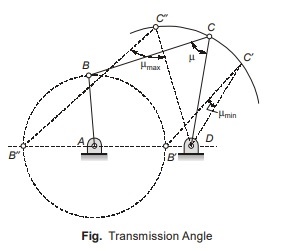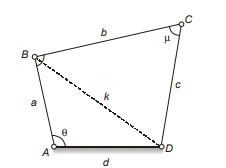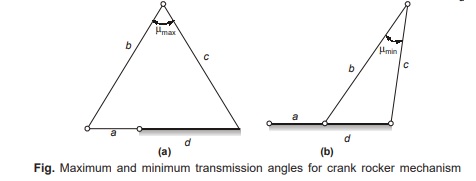Transmission Angle
In Fig. if AB is the input link, the force applied to the output, CD, is transmitted through the coupler link BC.
Here, pushing on the link CD imposes a force on the link AB, which is transmitted through the link BC. For

sufficiently slow motions (negligible inertia forces), the force in the coupler link is pure tension or compression (negligible bending action) and is directed along BC. For a given force in the coupler link, the torque transmitted to the output bar (about point D) is maximum when the angle μ between coupler bar BC and output bar CD is π/2. Therefore, ∠BCD is called transmission angle.
αmax = ⏐90° – μ⏐min < 50°
The angle μ between the output link and the coupler is known as transmission angle as shown in Fig. For toggle position, μ is zero.
If μ deviates significantly from 90°, the torque on the output link decreases. Sometimes, μ may not be sufficient to overcome the friction in the system and the mechanism may be

locked or jammed. Hence, μ is usually kept more than 45°. The best mechanisms, therefore, have a transmission angle that does not deviate much from 90°.

<< Previous | Next >>
Must Read: What is the Theory of Machines?

